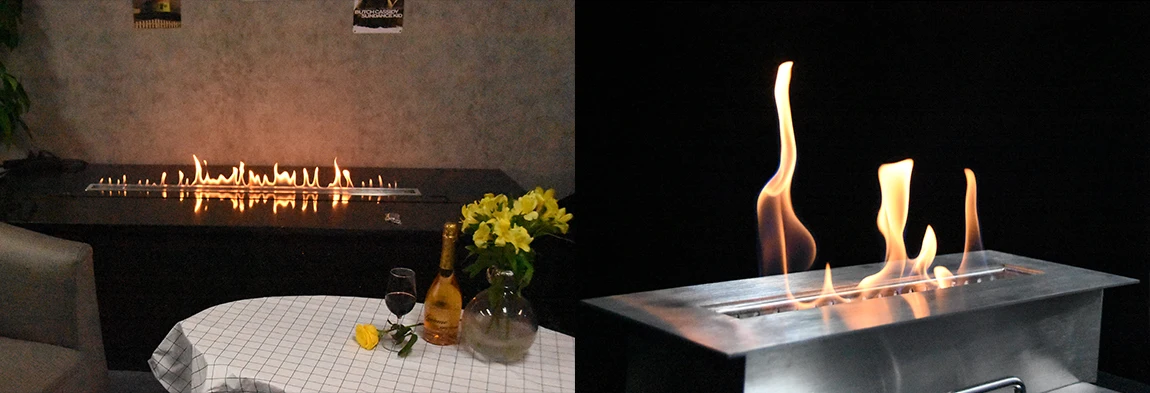Differences Between Manual Ethanol Fires And Automatic Ethanol Fires
Choosing the perfect bio ethanol fireplace from the wide array of models and burner types available can be quite daunting. However, understanding the differences between a manual ethanol fireplace and an automatic ethanol fireplace can help you make an informed decision.
The key contrasts lie in their operation and control mechanisms. A manual bio ethanol fireplace requires manual intervention for fuel filling, ignition, flame control, and extinguishing, with the user personally monitoring the process. On the other hand, an automatic ethanol fireplace incorporates electronic controls, such as pumped fuel filling, automatic ignition, adjustable flame intensity and electronic extinguishing options, providing convenience and added safety features. Let's delve deeper into their distinctions to help you make the right choice for your needs.

Automatic ethanol burners are a step up from manual ethanol burners. Automatic ethanol burners can be operated with a remote control, control panel or even your smartphone and smart home system. These remote-controlled bio ethanol burners are also safer thanks to many safety sensors overseeing their work.
A manual ethanol fireplace insert is a stainless-steel container that is filled with bio ethanol fuel. To start the fireplace, you need to use a long lighter to ignite the fuel. The point is that you have to adjust the flames manually and extinguishing the fire is done the same way.
What is the Differences between Manual and Automatic ethanol fireplace? Here today we talk about the differences to let you know how to choose the suitable fireplaces for your designs.
Manual or automatic bio ethanol fireplace? What does that mean, and what is the difference, when talking about bio fireplaces? This refers to the burner of the bio fireplace and how it works.
Bio ethanol fireplaces first appeared in 2005. The introduction of the bio ethanol fires made it possible to place a fireplace almost everywhere and without any venting, flue, smoke, soot or expensive maintenance. Since then, the technology and security have evolved, and today we have two types of bio ethanol fires: Manual and Automatic bio ethanol burners.
These two types each have their advantages and disadvantages. Hence, the type of burner you select, depends on what requirements you have for your fireplace, where it will be used, and what your budget is.
Although there are only two types of bio ethanol burners, the products from different manufactures can vary and offer differences in the way their burners work. For this reason, the information you will find in this guide will only be indicative. If you want a more accurate description of each manufacturer's bio fireplace and burners, you should check out the specific product page and read the manual linked on the page.
You can find all of our automatic or manual bio ethanol burners here:
Bioethanol Fires with a Manual Bio ethanol Burner
A manual bio ethanol burner, is a steel container made of stainless steel, which you fill with bioethanol. The burner has an opening, that can be round or long, depending on the shape of the burner. The flame is ignited with a lighter and extinguished by smothering the fire. The manual burner is the most known, and therefore, it is seen in most bioethanol fires, especially in wall mounted and freestanding bioethanol fires.
To increase the safety of manual bioethanol burners, almost all manufacturers had to find a method for how to avoid spilling the bioethanol out of the burner if it should fall or tip over. The most common method is the use of ceramics fibre cotton in the burner. This is designed to absorb the bioethanol fuel, and makes it impossible to spill the bio ethanol fuel out of the burner if it would tip over by accident.








